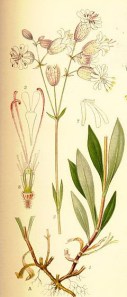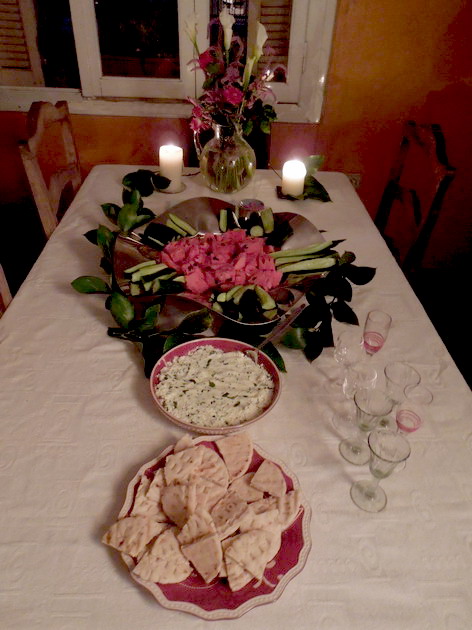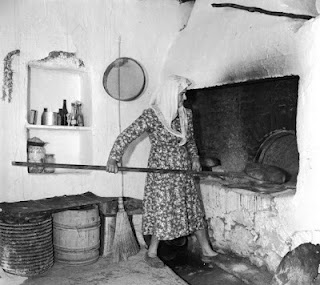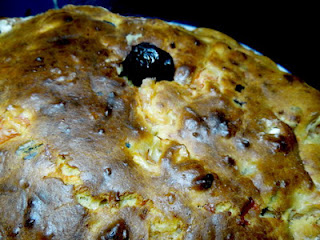The Third Siege of Messolonghi was fought in the Greek War of Independence, between the Ottoman Empire and the Greeks, for almost a year. The people of Messolonghi attempted a mass breakout on the night of April 10, 1826. The no-surrender decision of those too weak to participate in the Exodus culminated in the blowing up of the gunpowder magazine and their self-immolation.
The sortie of Messolonghi by Theodore Vryzakis
Hunger is closely connected with the siege of cities. Therefore
, it is no coincidence that one of the most dramatic famines in the modern history of Greece occurred during the siege of Messolonghi in 1826. 2 ½ months before the exodus, the hunger forced Messolonghites to consume unfamiliar foods: "While we searched the houses we found sufficient quantities of flour. We distributed it using a cup. A cup of beans was distributed to the needy as well.
They started to
mix this small amount of beans in a pot with flour; they added some crabs too.... A doctor cooked his dog with olive oil, which
we had in abundance, and he was full of praise for this food. The soldiers seized any dog or cat found in the street [ ... .] Around the March 15, we started (consuming) pikralethres, a bitter weed of the sea; we boiled it five times until the bitterness was gone, and ate it with vinegar and olive oil, like a salad, and (also) mixed with crab broth. [ ... ] they also ate rats and whoever could catch even a single one
was happy. Unfortunately, there were no frogs. From the lack of food diseases, arthritis and mouth ache, became commonplace. This was the situation when we got a letter from our envoys in Nafplion proposing us to eat (if it was needed) each other. " (1)
After they ate all the quadrupeds, birds, and greens – both the edible and dirty ones- Messolonghites started to eat strictly forbidden foods, such as human flesh or more precisely corpses, although -before the starvation’s climb to extreme levels- a proposal on eating the dead enemies had been rejected with horror. But "as the days passed by, the lack of food became desperate; the description given by Lefkadios Stefanitsis (the fortunate doctor of the Guards who managed to survive the famine and exodus from Messolonghi) is really horrific: soon after the battle of Kleisova, predicting more severe food shortage, Stefanitsis suggested that the corpses of the Egyptians should be salted and given as food to the residents. But this was rejected and the only food they had was the spring swallows."(2)
But,
during times of desperate need for food, human being does the unthinkable and unmoral to survive. N. Kasomoulis, Art . Michos and N. Makris mention the following incidents of necrophagy in their memoirs. "...many families started to eat their relatives who were killed by the famine", Mihos writes, "and (Vayias) found a piece of a thigh and other remains of a child hidden in the home of a family from Zygo or Apokouro; shuddering with horror, he had been informed by the lady of the house that the kid had died of hunger but was used to feed the survivors. Unfortunately, this was true, since no other food was found in the house" ( 3) Kasomoulis says that "a man from Kravara cut some flesh from the thigh of a killed defender, and ate it.”
The abolition of dietary codes and taboos because of hunger is associated with a softened feeling of disgust and of moral inhibitions. Cooking process helps starving people to transform prohibited foods into something delicious or just tolerable. General N. Makris mentions in his memoirs that
"Many Messolonghites found themselves in need for food, thus they removed the liver from the killed healthy people, fried it in olive oil and poured some vinegar on it; This food was considered tasty by those who ignored its origin, and tolerable by those who were aware of it. (4)
It is true that the stories related to the ultimate taboo are not really detailed, however, they say a lot about the Messolonghi tragedy. The last meeting of the defense leaders offers one of the most dramatic stories that came out of the city: “after having one hour conversation, they agreed that in order to save most of us, should eliminate those factors- like cowardice or love for life- that might encourage a betrayal. It was decided to kill all captives, Turks and Christians, who worked in the public sector, simultaneously, and if someone knew a Turk or Christian suspect, he should kill him as well. Tziavelas immediately ordered to kill his beloved and faithful Arab Turk, and everyone did the same.
Immediately
they killed and slaughtered all the Cossacks, up to 30 people, and craftsmen, who worked for the enemy (diggers) and were captured (by us) as well as all Turks. Our hearts became so hardened that we didn’t know (what we have done). My brother Metros (Kasomoulis) recovering from illness and being informed about it, he ran and slaughtered twelve people on the beach. He came covered in blood from head to toe, happy. He startled my soul; I scolded him for trying, like a pelican, to kill so many people.
-Eh, he said, don’t bother me now; I could slaughter 500 people, and many more. What is left to us besides drinking blood, for we have nothing to eat? "(5)
Necrophagy is a historical fact mentioned in Greek history. Of course, not a single word is to be found about it in the Greek schoolbooks. It is hushed up, just like a detail that doesn’t contribute to the ethnocentric concept of the nation. At the same time, famine was considered the main cause for the fall of Messolonghi. Not a single word about the lack of unity or about the Peloponnesian leaders who didn't trouble themselves to help Messolonghi (6); not a single word about
the wasted English loan of 1.000.000 talira while "
100.000 talira could save this stronghold."
1 Ν. Κasomoulis, ''Enthymimata stratiotika tis Epanastaseos ton Ellinon, ed. G. Vlahogiannis, Athens, 1939, vol. Β΄, p. 256.
2 Michopoulos Ph. Oi teleftaies imeres tou Messolonghiou, Αthens 1957, p. 22.
3 Michos Art., “Αpomnimonevmata”, Apomnimonevmata agoniston tou 21, ed. G. Tsoukalas, vol.2, Athens 1956, p. 48.
4 Makris N., Apomnimonevmata agoniston tou 21, ibid, vol. 19, p. 64
5 Ν. Kasomoulis, ''Enthymimata stratiotika..'', ibid, p .252.
6 ''What if Messolongi is falling? Is the whole Greece Messolonghi?'' Spyromylios, Chronico Messolonghiou 1825-6.
ΓΙΑ ΕΛΛΗΝΙΚΑ ΕΔΩ



























.jpg)
.jpg)

.jpg)

.jpeg)
.jpg)










.jpg)

